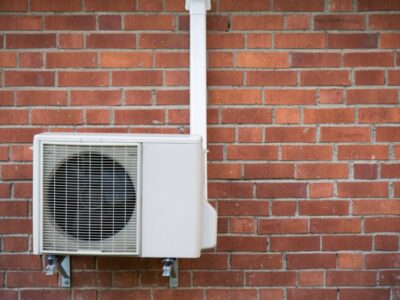
Sustainability has become popular business jargon for mega-corporations and small businesses alike over the past decade. But where does that leave you and your family with your efforts to be–you guessed it–more sustainable? Part of the problem with the now-widespread phrase is there doesn’t seem to be a uniform definition, at least not for individuals or families. There are corporate definitions that address issues like manufacturing or pollution, but sustainable living is a bit more elusive.
The term sustainable danced its way into the vernacular in the mid-1980s following the United Nations’ publication of The Brundtland Report, a concise primer defining sustainable development, mainly from an agricultural perspective. Although the scope of the report is more big-picture, it highlights the tension at the heart of sustainability as a whole: development vs. conservation.
At its core, sustainability (whether it be sustainable living, sustainable development, sustainable agriculture, etc.) is about making progress and moving forward without compromising the world we leave behind for our families.
Almost forty years later, the phrase is more commonly used and the U.S. has one of the best working definitions of sustainable living: “becoming aware of the choices in food, products, and energy use.” Other global organizations like UNICEF have also crafted more overarching definitions. OK, what does that translate to for your family, though?

To begin, sustainable living is a mode of existence that minimizes your household’s impact on the world, enabling a better future for your generations to come. Individual acts or appliances can be sustainable in and of themselves, but true success is fostered when collective changes are made, many of which do not incur more cost than non-sustainable options.
Check out the list below for some manageable lifestyle alterations that can put you and those close to you on an easy path to sustainability!

Limit Waste
The most recent solid waste calculations put the average American’s daily trash production at 4.9 pounds per person per day. Cumulatively, this produces nearly 300 million tons of solid waste nationwide per year, as of 2018 data. Mild to moderate waste production is unavoidable. Everyone eats, buys things, and has to live their lives, but there are small ways everyone can contribute to lowering waste production.
Invest in a glass or stainless steel water bottle. It not only keeps your beverages hot/cold for longer, but it reduces the number of plastic bottles or coffee cups you dispose of. Another great choice is meal prepping. Making your food ahead of time helps control portion sizes and avoids throwing away excess food. If this isn’t possible, consider holding onto leftovers from same-day meals and making them into something new at the end of the week.
If you’re ordering in for the night, consider some apps that help eliminate restaurant-generated food waste. Consider reusable kitchen products: glass Tupperware, reusable wax paper, and kitchen towels instead of paper towels (while this is eco-friendly, in all transparency it will add to your laundry pile, so consider an inexpensive multipack so you can continue doing laundry at a normal cadence).
Recycle, If Possible
Recycle glass, paper, and plastic as applicable in your municipality. Not all towns provide recycling services, and those that do can have restrictions. Check with your local waste management service (or online) to see what materials they accept.
Remember, there are all different types of plastic, signified by the number on the bottom of the product. Some towns only accept select numbers.
Save Energy And Water!
One of the easiest ways to conserve resources is to turn off the faucet while brushing teeth, shaving, and washing your hands or face. Leaving the faucet running can waste gallons of water. Also, remember to switch off the lights when you leave a room. This is a fabulous financial strategy as well — green all around!
If appropriate, try washing your clothes on ‘cold’. Studies show up to 90 percent of the energy from washing machines goes towards heating water. Washing with cold or warm water will kill germs, but in some circumstances, hot water is needed to help sanitize.
Living sustainably means only taking what you need. If you want to splurge, you can buy more energy-efficient appliances, but it’s not necessary to rush out and buy a new fridge if you don’t need one in order to make a difference.
Alternative Transportation
No, this doesn’t mean you have to buy a new car. However, you can consider walking or biking if you’re physically able and the weather permits. Lowering the emissions you contribute to the air is an easy fix. Biking or walking (albeit slower, usually) can also brighten your day!
Buy Toxin-Free Items
Finding products that are completely toxin-free can be challenging, but there are options to simply lower the amounts you’re consuming. Toxins are largely seen in beauty or care products (makeup, shampoo, soaps, etc.) so consider buying organically wherever possible. Eco-Conscious beauty is on the rise, and there are tips to help you get going.
Shop Locally
Buying locally limits the amount of greenhouse gases used for transporting products long distances while also supporting local businesses. Check out where and when your local farmers’ markets or artisan markets set up.
Sustainability is within reach. It doesn’t have to mean a complete overhaul of our lives at the expense of our wallets. Small actions that may seem insignificant do make a difference, and it’s all about getting into a good habit!





